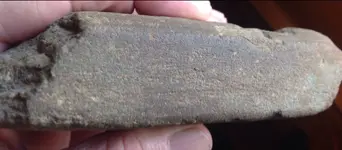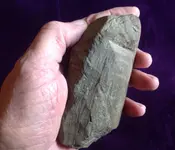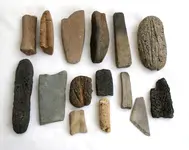lisfisher
Hero Member
Hello, I dug this thing up many years ago in a chunk of land that the state had previously planned to run the local interstate through. As they began prepping the land for the highway, many native american artifacts were turning up, so they had to re-route the highway slightly to the east. Anyway, I used to dig there and came up with this thing one day. I am no expert, but the top of this thing sure looks like it's been used many times, it has this waxy sheen to it in spots, like it has had objects struck or rubbed on it with the grain, and is super smooth but only on the top, like it was used as some sort of sharpening device. What do you think?? You can see the waxy type sheen on the top of the stone better in the first picture.
Attachments
Upvote
0

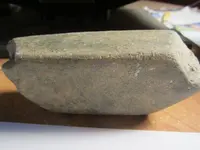
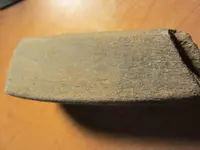
 Kat
Kat
